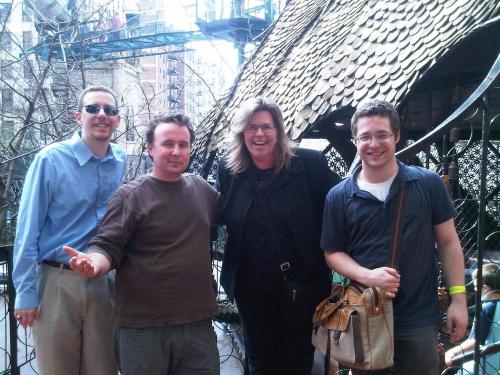Renee Hobbs, Michael Robb Grieco and David Moore offered a presentation at the Popular Culture Association/American Culture Association National Conference in St. Louis, MO, April 3, 2010.
Media literacy educators make active use of copyrighted works in the practice of teaching and learning. They frequently use popular culture, mass media, digital media or other artifacts as tools to promote critical thinking and communication skills. Unfortunately, a climate of fear has been increasing among educators in higher education, K-12 schools, and among non-profit and cultural organizations. In response, media literacy educators in the United States are beginning to assert their fair use rights.
Published in 2008 with support from the John D. and Catherine T. MacArthur Foundation, the Code of Best Practices for Fair Use in Media Literacy Education identifies five principles that guide educators’ decision-making about the application of fair use in education, including the use of copyrighted materials in teaching, the development and distribution of curriculum materials, student use of copyrighted materials in their own academic and creative work, and dissemination of student work.
This paper describes the development of multimedia teaching materials to support the Code of Best Practices for Fair Use in Media Literacy Education. We created a number of multimedia teaching materials to reach three distinct audiences: high school and college students, K-12 teachers, and graduate students enrolled in programs in communication and education. In this paper, we describe the development of two music videos and three short video documentaries designed for use with these groups. We outline the creative strategies at work in our decision to use music video and short documentary genres; describe the collaborative process that involved researchers, musicians, filmmakers and animators; reflect on the instructional methods used with these multimedia tools; and critically analyze audience reception to the materials.

Media literacy educators make active use of copyrighted works in the practice of teaching and learning. They frequently use popular culture, mass media, digital media or other artifacts as tools to promote critical thinking and communication skills. Unfortunately, a climate of fear has been increasing among educators in higher education, K-12 schools, and among non-profit and cultural organizations. In response, media literacy educators in the United States are beginning to assert their fair use rights.
Published in 2008 with support from the John D. and Catherine T. MacArthur Foundation, the Code of Best Practices for Fair Use in Media Literacy Education identifies five principles that guide educators’ decision-making about the application of fair use in education, including the use of copyrighted materials in teaching, the development and distribution of curriculum materials, student use of copyrighted materials in their own academic and creative work, and dissemination of student work.
This paper describes the development of multimedia teaching materials to support the Code of Best Practices for Fair Use in Media Literacy Education. We created a number of multimedia teaching materials to reach three distinct audiences: high school and college students, K-12 teachers, and graduate students enrolled in programs in communication and education. In this paper, we describe the development of two music videos and three short video documentaries designed for use with these groups. We outline the creative strategies at work in our decision to use music video and short documentary genres; describe the collaborative process that involved researchers, musicians, filmmakers and animators; reflect on the instructional methods used with these multimedia tools; and critically analyze audience reception to the materials.